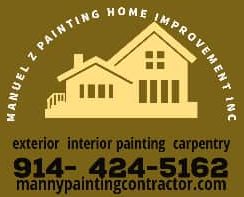Exterior Interior House Painting
: To Prime or Not to Prime?
- Priming is not always necessary for every project, especially as many Benjamin Moore paint products are self-priming (paint and primer in one*). Before you select a primer for your project, you should first determine whether you even need to prime.
- If you’re working with a previously painted surface that is in good condition, you most likely do NOT need to prime.
- Here are a few painting scenarios for which we highly recommend using a primer:
- Bare substrates that have not been previously painted or coated
- Any bare PVC or composite material
- Surfaces that have been sanded down to the bare substrate due to damage
- Surfaces where rust or stains are present
- Dramatic color changes
- Any hard-to-coat substrates like plastic, laminate, glass, high-gloss or non-porous surfaces
#2: A Primer on Primer: Things to Consider
- Once you’ve determined that you DO need to prime, it’s time to choose the right primer for your project.
- Choosing the best paint primer for your project will save you time and optimize everything from stain suppression to adhesion.
- The right primer will also help you achieve optimal performance and aesthetics from your finish coat.
Read on for our overview of the top considerations for choosing the right primer for your painting project. PROFESSIONAL REMOVAL WALLPAPER
INTERIOR PREP WALLS PAINTING TESTIMONIALS
#3: Acrylic vs. Alkyd (Oil-based) Primers
- When it comes to choosing a primer, the primary consideration will usually be whether to use an acrylic primer, or an alkyd, oil-based primer.
- Acrylic paint primers offer easier application, water clean-up, and fewer environmental considerations. This type of primer can be used for almost any surface, including wood, laminate, and metal, unless there is the presence of rust (more on that later).
- Alkyd (oil-based) primers offer superior stain blocking—think tannin-rich woods, rust, smoke, or water stains.
- Alkyd-based primers are a good choice for both interior and exterior bare wood substrates. They are efficient in penetrating the wood’s porous surface, and provide long lasting adhesion.
- PROFESSIONAL INTERIOR EXTERIOR HOUSE PAINTING manuelzpaintinghomeimprovementinc.com
